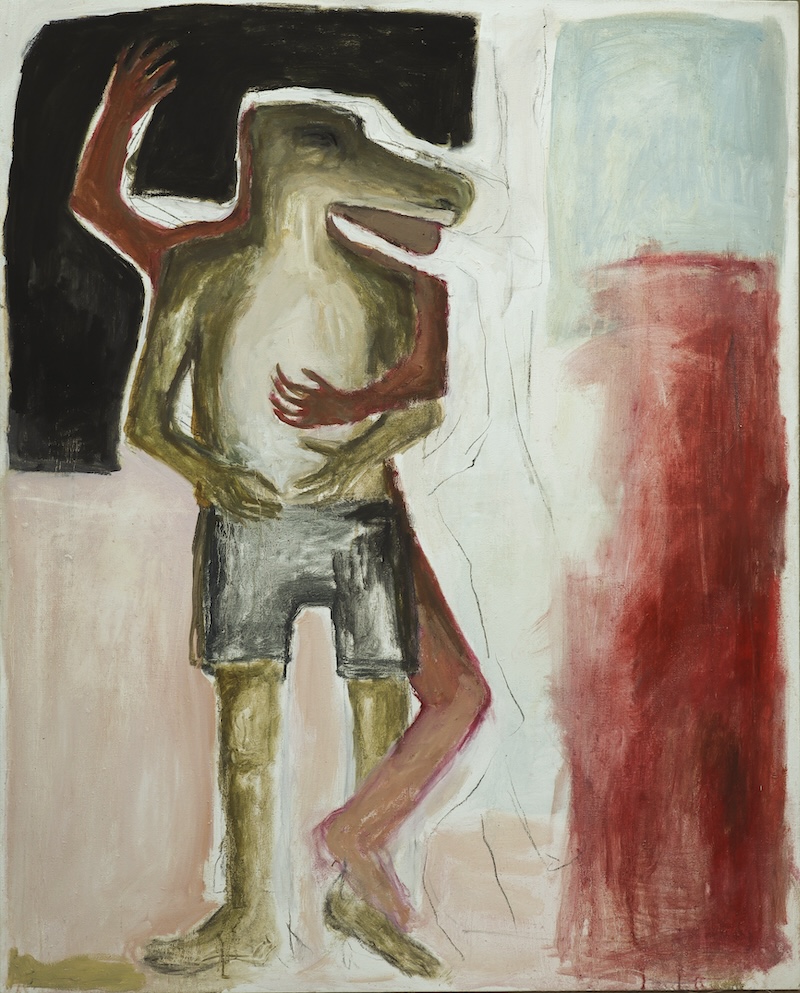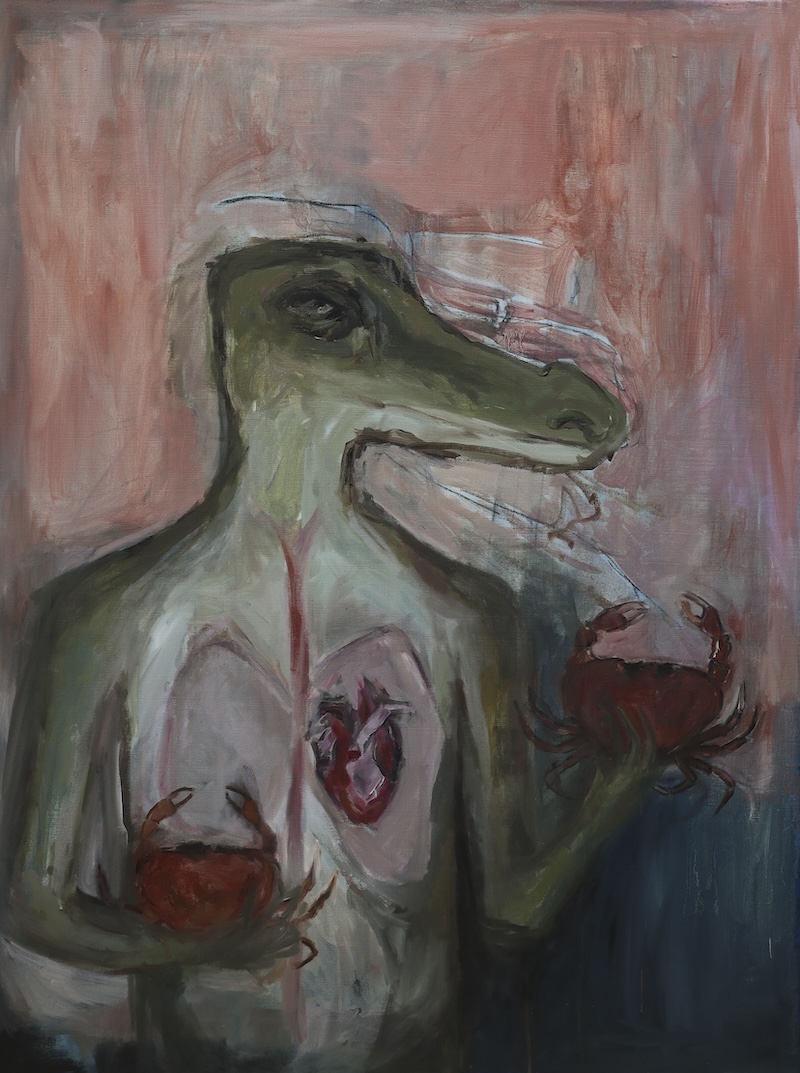In the middle of the pandemic, when we sat down with Layla Andrews in a print interview, she said to us, "I think more than loud, it is important for me that art reaches people. As time has gone by, I have found that the most important element for me, within my work, is that people can connect or interact with it in some human capacity. I believe that storytelling is thematic within my work. Art isn’t here to serve a select few, it should be inclusive and encourage people from all backgrounds to feel something from it."
Soho Revue is proud to present Flies in Amber, a solo exhibition by Layla Andrews. This marks the gallery’s third solo show with the artist, who is currently a studio holder at Tracey Emin’s TKE Studios in Margate.
In this new body of work, Layla Andrews delves deeper into her exploration of human emotion and storytelling through a series of paintings where anthropomorphic crocodiles take center stage. By substituting human figures with these crocodilian characters, Andrews creates a deliberate sense of distance, offering viewers a moment of pause to foster both empathy and introspection. The crocodile, a creature symbolising wisdom and resilience, serves as a metaphor for survival and endurance across time. Having existed long before humanity, its remarkable ability to adapt and persist is a central theme in Andrews’ work.
The exhibition title, Flies in Amber, draws a poignant parallel between the stillness of an insect preserved in resin and the act of capturing fleeting moments in time. This notion of something suspended yet eternally preserved reflects the delicate balance between life’s transience and its enduring essence. “It’s about seeing our humanity reflected back in unexpected forms, ” Andrews explains.
Through her work, Andrews seeks to express the essence of being alive, reflecting on the emotions, stories, and fragments of identity that shape who we are. Her practice is deeply rooted in her personal history, drawing inspiration from her mixed-race heritage, working-class upbringing, and the matriarchal household in which she was raised. These experiences enrich her exploration of both individual and collective narratives, making her work profoundly personal and universally resonant.
















